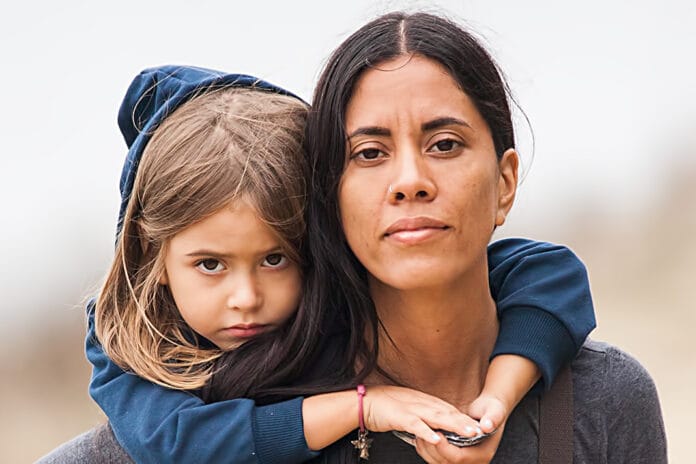When families are severed from the land of their origin and placed in another country, living conditions are anything but ideal. Refugees face many problems when settling in new surroundings. Money is tight, there is a cultural shock, and there is often discrimination and xenophobia based on race or religion.1
Under all these conditions, thinking about oral health, especially for the children, might not be on the list of priorities for the refugee parents. This is one of the many reasons why refugee children have a higher percentage of oral diseases as compared to non-refugee children.2
A dental hygienist can be a great resource in supporting underserved communities by improving oral health through education and bridging the gap between dental and medical services.
Health of Refugees
Many First World countries take refugees from troubled regions of the world. In the United States, the refugee resettlement program was created in 1980, and immigrant families have settled more in the U.S. than in any other country in the world. According to The Migratory Policy Institute, more than 44.5 million people living in the U.S. are foreign-born, making up 13.7% of the U.S. population.3
Voluntary immigrants who settle in the U.S. are usually in good health compared to their native U.S. peers. This trend is known as “The Healthy Immigrant Effect,” which is due to selection bias for choosing only healthy individuals as candidates for migration to the U.S. Refugees that make up 10% of the immigrants, however, present a different picture. Upon arrival in the new country, these refugees may have preexisting health conditions and are in a much more difficult position compared to their voluntary immigrant peers.4
Maternal Influence on Oral Health
Oral diseases in refugee children were one preexisting condition in which the parents’ role, especially that of a mother, played a key role.5 Maternal oral health directly affected a child’s oral health through the transfer of direct cariogenic bacteria from mother to child.
The mother’s psychological health and dietary habits also play a vital role. Lack of maternal knowledge of oral health was another factor. The theme of fear of doing dental procedures during pregnancy was also noted in refugee communities, where it was a common belief that dental work might harm the unborn child.6
There remained much confusion about a child’s oral hygiene practice. A study in Australia noted that only 1% of pregnant women from a refugee background attended dental services despite having large numbers of births in the region.6 In a study conducted on Syrian refugee children, a questionnaire about oral health and quality of life was given to parents. The results revealed that oral pain was the biggest concern of both mothers and fathers of the children.7
Adapting to New Oral Health Habits
Acculturation is “lifestyle and behavioral changes of people as they move from one culture and adapt to another culture, usually as a result of immigration.”3 This adaptation process has a direct impact on the oral health of refugee children. A lower level of understanding of the health system was observed with less English proficiency.8 The need to seek medical help only in sickness was common among many refugees coming from different cultures. This was the case, especially with the primary teeth of young children.3
Financial struggle is yet another roadblock that ties the hands of refugees in seeking preventive dental care. No matter where the refugees come from, the lack of financial resources was a common theme. Dental work is expensive, and finding affordable dental care was exhausting and inadequate.9 For refugees living in San Antonio, Texas, a survey reported that 45.9% lacked dental insurance, and 41.5% did not have money for dental treatment.10
Seeking Guidance from Dental Hygienists
A dental hygienist can help prevent oral diseases in refugee communities and educate these families about health care access. An Australian study conducted on Afghan and Sri Lankan pregnant refugee mothers concluded that pregnancy was the right time to start preventive care. Poor maternal oral health is a modifiable risk factor, and dental screening is needed to be a part of maternity health services.6
The study also noted a policy-to-practice gap. Midwives and OB-GYN personnel were unable to direct mothers who had inquiries about dental issues due to a lack of communication between health care workers and dental care providers. These mothers felt overwhelmed navigating their way through dental care service. The need for collaboration between midwives and dental health workers was emphasized for the marginalized communities where dental care workers could work along with OB-GYNs and midwives.6
Refugees come from different cultures and backgrounds with different dental perceptions, poverty, and language limitations. Dental hygiene students exposed to culturally diverse patients would be prepared to bridge the cultural gap that the refugees face due to acculturation and help build trust in the preventive aspect of oral care.11
A study was done with dental hygiene students where the students were exposed to culturally diverse patients. Students who were observed in this study admitted to not being properly prepared to deal with a culturally diverse population. Training students for diverse refugee populations can be done in the clinical setting as part of the dental hygiene curriculum.11
Bridging the cultural gap can also be achieved by having culturally concordant and diverse dental care providers. This makes the dental provider, like a hygienist, sensitive to the patient’s home culture and helps build trust between the family and provider. This trust helps in educating basic oral hygiene and at-home care and further helps the displaced families with the whole health system. Understanding patients’ culture and diversity also gives the provider insight into cultural beliefs, especially surrounding oral health, and compels them to work on their own cultural biases.3
The humanistic approach to dental care includes not only language but also the cultural understanding of the individuals. This can be achieved by treating patients from different cultures during the attendance of a dental hygiene program. With these understandings, a dental hygienist can provide more comprehensive assessments and patient education, such as nutritional counseling, applying fluoride, and providing necessary referrals for refugee children.3
I believe a dental rotation to a refugee settlement or residential area can help as well. Hygienists can present oral hygiene instruction (OHI) in a place where the refugees feel comfortable. I plan to visit an apartment complex where many Afghan refugees reside to provide OHI to children and mothers and introduce them to dental hygiene services.
Making dental care more affordable could become a great motivator for engaging displaced communities. Many institutes take initiatives that are oriented especially toward refugee families. One such initiative is the Open Wide clinic, a one-day free clinic in Manitoba’s College of Dentistry in Canada. The dental staff focuses on dental-related issues, from hygiene treatment to restorative procedures. Advice on good oral hygiene is part of the Open Wide initiative.12
Another way to focus on dental preventive care for refugee children would be through dental screening at schools. Although it is not a very reliable method, it was still found with low certainty that specific referrals given after dental screening increased dental attendance.13
By having access to refugees and understanding their culture, values, oral health literacy, and fears, a dental hygienist can be a great help. Good communication between a hygienist and refugee families can work miracles in preventive care for the refugee children, which they can benefit from for the rest of their lives. By emphasizing preventive dental care and education, these families can save a lot of money that would normally be spent seeking emergency dental procedures, making refugee children feel welcomed in their new country.
Before you leave, check out the Today’s RDH self-study CE courses. All courses are peer-reviewed and non-sponsored to focus solely on high-quality education. Click here now.
Listen to the Today’s RDH Dental Hygiene Podcast Below:
References
- Ziersch, A., Due, C., Walsh, M. Discrimination: A Health Hazard for People from Refugee and Asylum-seeking Backgrounds Resettled in Australia. BMC Public Health. 2020; 20(1): 108. https://bmcpublichealth.biomedcentral.com/articles/10.1186/s12889-019-8068-3
- Nicol, P., Al-Hanbali, A., King, N., et al. Informing a Culturally Appropriate Approach to Oral Health and Dental Care for Pre-school Refugee Children: A Community Participatory Study. BMC Oral Health. 2014; 14: 69. https://bmcoralhealth.biomedcentral.com/articles/10.1186/1472-6831-14-69
- Crespo, E.. The Importance of oral health in immigrant and refugee children. Children. 2019; 6(9): 102. https://www.ncbi.nlm.nih.gov/pmc/articles/PMC6770947/
- Heller, T., Parker Harris, S., Gill, C.J. et al. (Eds.). (2018). Disability in American life: An Encyclopedia of Concepts, Policies, and Controversies. ABC-CLIO.
- Noaman, B.R. Maternal Dental Health Knowledge and Its Relation to the Dental Caries Experience of Their Children in Mamyzawa Camp of Refugees in Erbil, Iraq. Acta Medica Academica. 2019; 48(3): 294-302. doi:10.5644/ama2006-124.270
- Riggs, E., Yelland, J., Shankumar, R., Kilpatrick, N. ‘We Are All Scared for the Baby’: Promoting Access to Dental Services for Refugee Background Women During Pregnancy. BMC Pregnancy and Childbirth. 2016; 16: 12. https://bmcpregnancychildbirth.biomedcentral.com/articles/10.1186/s12884-015-0787-6
- Pani, S.C., Al-Sabai, S.A., Rao, A.S., et al. Parental Perception of Oral health-related Quality of Life of Syrian Refugee Children. British Dental Journal. 2017; 223(7): 499-499. https://www.nature.com/articles/sj.bdj.2017.864
- Rojas-Guyler, L., Britigan, D.H., King, K.A., et al. Health Information Seeking Behaviors and Preferences among Latino Immigrants: The Role of Acculturation and Functional Health Literacy. Health Educator. 2016; 48(1): 10-18. https://files.eric.ed.gov/fulltext/EJ1153623.pdf
- Keboa, M.T., Hovey, R., Nicolau, B., et al. Oral Healthcare Experiences of Humanitarian Migrants in Montreal, Canada. Canadian Journal of Public Health. 2019; 110(4): 453-461. https://www.ncbi.nlm.nih.gov/pmc/articles/PMC6964583/
- Saadeh, R., Cappelli, D., Bober-Moken, I., et al. Assessing Oral Health Status, Practices, and Access to Care among War-affected Refugees Living in San Antonio, Texas. European Journal of Dentistry. 2020; 14(3): 371-379. https://www.ncbi.nlm.nih.gov/pmc/articles/PMC7440946/
- Capozzi, B.M., Giblin-Scanlon, L.J., Rainchuso, L. Treatment of a Culturally Diverse Refugee Population: Dental Hygiene Students’ Perceptions and Experiences. Journal of Dental Hygiene. 2018; 92(2): 50-56. https://jdh.adha.org/content/92/2/50
- Doiron, D. (2016, November 6). Newcomers All Smiles after Free Volunteer Dental Clinic. Winnipeg Free Press. https://www.winnipegfreepress.com/breakingnews/2016/11/05/newcomers-all-smiles-after-free-volunteer-dental-clinic
- Arora, A., Kumbargere Nagraj, S., Khattri, S., et al. School Dental Screening Programmes for Oral Health. The Cochrane Database of Systematic Reviews. 2022; 7(7): CD012595. https://www.cochranelibrary.com/cdsr/doi/10.1002/14651858.CD012595.pub4/full











